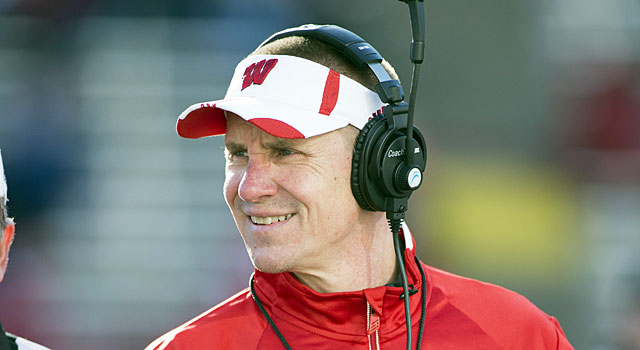We’re now two weeks through the regular season, basically an eighth of the season if you can believe it. That means that some of the play-calling tendencies of the Raiders new offensive coordinator are becoming set and can be tracked.
Every week, quality control and advanced scouting coaches review tape to see what their opponents like to call so they can game plan accordingly. For example, does the offensive coordinator typically run or pass when he has one tight end , a fullback and a running back on the field? That will help the defensive coordinator determine how to attack the formation and what personnel he wants on the field that week.
For the Raiders, offensive coordinator Greg Olson’s tendencies are becoming clearer. This is the first time in his career he’s taken an offense from the beginning of the offseason and been able to call plays right away with his own play book. All his previous OC positions have started with him developing a game plan but not calling plays until mid-season or mid-way through his tenure.
Here are some of Olson’s play calling tendencies through the first two games:
Olson’s most common package is the 21 package (two running backs, one tight end, and two receivers), which he has called 44 times, slightly over 36% of the plays called.
When the 21 package is on the field, Olson has called a pass almost 60% of the time.
Second to the 21 package is the 11 package (one running back, one tight end and three receivers), which Olson has called 35 times, just shy of 30% of the plays called.
So, the 21 and the 11 packages have combined for 2/3 of the plays called by Olson in the first two games.
The 11 package is Olson’s preferred two minute offense package and he’s used it as such in both games. Typically, this will haveDarren McFadden as the one back and TE Mychal Rivera as the one tight end as both are good options in the passing game.
With that information, it should come as no surprise that the 11 package is very pass-heavy, with passes accounting for 80% of the plays coming out of that formation.
The next most popular formation is three receiver set with a fullback and a running back and no tight ends. The Raiders have split this formation with 50% on passing and running, each.
In the Indianapolis game, the Raiders scored the McFadden touchdown by running three sequential plays out of their Jumbo package – two running backs and three tight ends with no receivers on the field. The first two runs were with Rashad Jennings and the last, scoring touch was McFadden in the same package.
There were no goal line opportunities in the Jacksonville game, so it remains to be seen if that is a consistent goal-line package or if it was more a matchup the team liked versus Indy.
In the Jacksonville game, the Raiders had five long runs. Three of those runs came out of the 21 package (two running backs, one tight end and two receivers). One of the plays came out of the 11 package (one running back, one tight end and three receivers). The final long run came out of the 20 package (two running backs, zero tight ends and three receivers).
The Raiders have had a running back in on every play of the season, to date. They have yet to run any plays out of a four receiver package although they have run plays with a cleared backfield by using McFadden, Rivera and FB Marcel Reece split out as wide receivers.
When the Raiders were up against Jacksonville with about four minutes remaining, they ran a lot plays out of a two tight end two back formation, which is a traditional power formation that will likely be their run-the-clock formation this season.
Some other, non-package related thoughts:
-Rookie TE Mychal Rivera should start getting more playing time and could replace Jeron Mastrud as the starter at some point this season. He’s a substantially better pass catcher and looks at least average as a blocker.
Also, Terrelle Pryor is showing increasing comfort with him, throwing to Rivera around the first down line even if he’s doubled or, at least once, triple covered. Rivera, to his credit, has been a very consistent safety release for Pryor.
-Tracy Porter had a solid game against Jacksonville after looking very poor versus Indianapolis. It remains to be seen whether that was a product of him being better or simply a much worse opponent.
-OT Matt McCants has seen time this season as the team’s third tight-end, typically right against either the right or left tackle and with another tight end next to him, as well. He’s been a run blocker, there, only, as the Raiders have run every time he’s been on the field.
-LG Lucas Nix looked terrible, even watching the plays again, in the second game. Sitting him when he’s not healthy is the right thing to do as he needs to get his head right and focus on making his blockers every play. Nix is likely a better fit at RG than LG because the LG is asked to move so much more than the RG – usually the LG is the pulling guard in an angle blocking scheme.
-The Raiders appear to have a goal of running and passing equally in the first half of each game – in the Indy game they went into half time with 16 run play-calls and pass calls 17 times (QB scrambles are counted as a pass play call unless it’s a designed run). In the Jacksonville game, they went into halftime having called a run 11 times versus 13 pass calls.
Add The Sports Daily to your Google News Feed!
